Hard by the confluence of Cardigan Bay and the Dovey Estuary and hemmed in by the Cambrian Mountains, the links of Aberdovey fit neatly between a long range of protective dunes and the railway line. Not more than a few minute's walk from the 1st tee one can easily alight a train and head for an afternoon game at Harlech some 30 minutes away. The medley of Aberdovey and Harlech with lunch on the train between games is surely a compelling summer day's golf which is hard to argue against.
It is said that Aberdovey was the spiritual home of Bernard Darwin and that one of his uncles, Colonel Ruck, helped lay out the original course using flower pots for cups. However, this original effort is a long forgotten memory. The general course as we know it today was completed by the turn of the last century, but significant improvements were made between 1910 and 1940 by Colt, Fowler and Braid. In recent years a thorough overhaul of the bunkers was completed and the look echoes back to what bunkers resembled all those years ago when Darwin traipsed the links. Although, as of 2018 the club has decided to modify some of the bunkering to be more player friendly. Let us hope the aesthetic isn't compromised too much because it was one of the best bunker jobs I have seen.
The opening quintet are classic links holes made all the more appealing for their use of the land and thoughtful tinkering from the hand of man. The opening drive isn't terribly onerous, but the hole is nonetheless a stiff two-shotter when played into a cool winter breeze. Before making the trip into the deepest of Wales I re-read Dickinson's account of Aberdovey. His description of rather flat or gathering greens matched my recollection and thus it was a great surprise to see the opening green. There are a handful of greens which are of great interest.

A sideview of the green.

A wonderful short par 4, the 2nd must be within reach from the tee in favouring conditions. This is also one of the mere handful of holes in which the dunes play an active part in the design. Left is dead. Before heading to #3 tee, notice how narrow this section of the course is. Despite this lack of space, the clubhouse end of the links contains the most engaging terrain and most of the best holes.

There are plenty of narrow fairways at Aberdovey. Before and after recent bunker work...very disappointing.


Behind the green the reader will notice oodles of space in the form of the 17th fairway to the left. I imagine going that far right off the tee is a very common play.

Despite the famous Cader being subdued compared to its heyday, the hole remains excellent and just one of a superb set of short holes, all of which are totally different from the other. Below is how the hole looked in Darwin's day. One can see the tee shot played directly over the high part of the hill for a totally blind shot. Today, the hole covers a lower part of the hill to the left which then allows for the 17th tee to share the space.
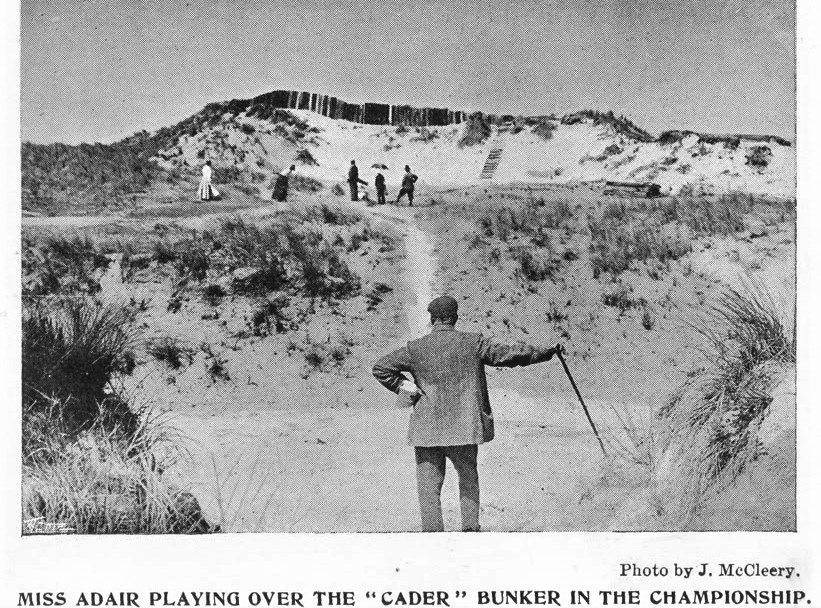
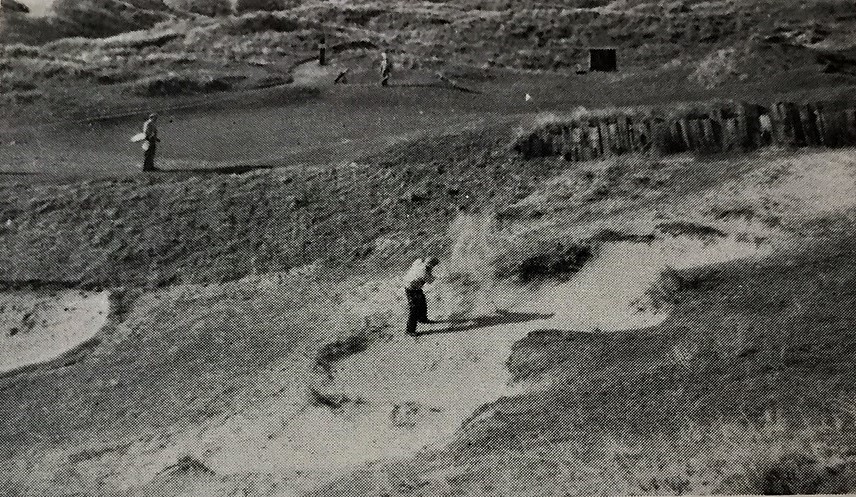
Patric Dickinson's take on Cader.
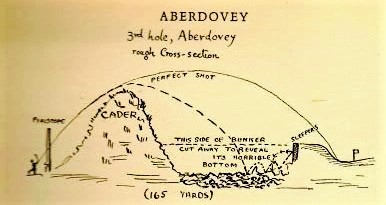
A closer look at the green.
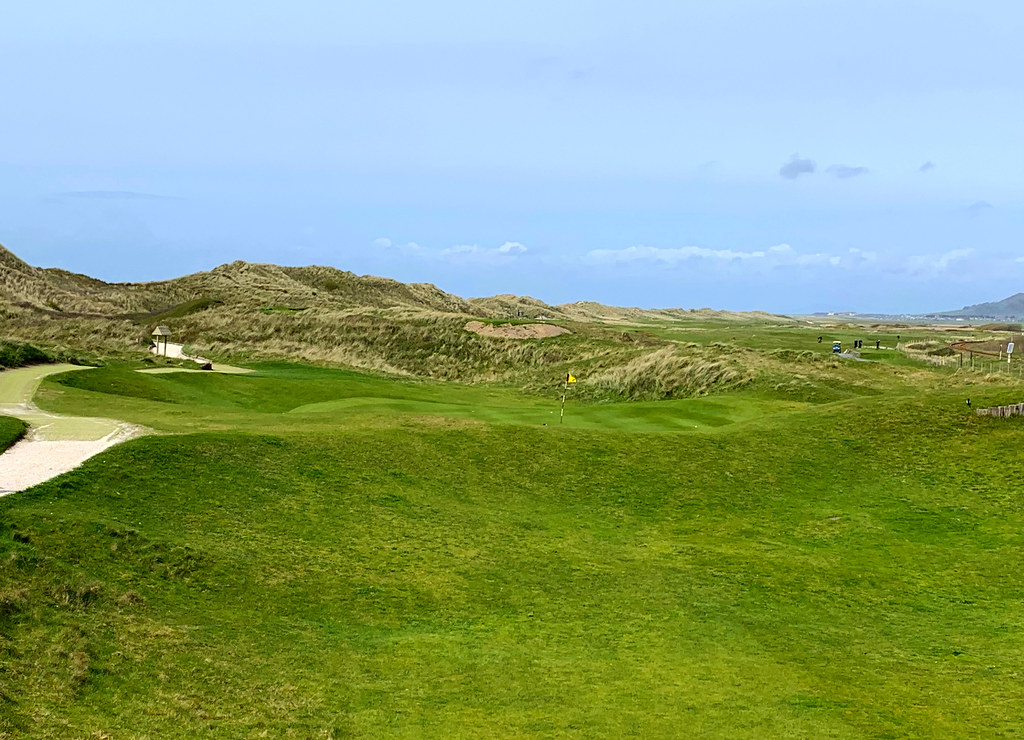
Near the 17th fairway.

The fourth breaks free of the dunes and hummocky ground. With few exceptions, the next twelve holes play over flat land with a marshy area separating two strips of playing corridors. Most of the interest for these holes is due to architectural acumen. The tee shot for #4 must challenge the line of bunkers down the left to earn a good view of the green. Before and after bunker work.
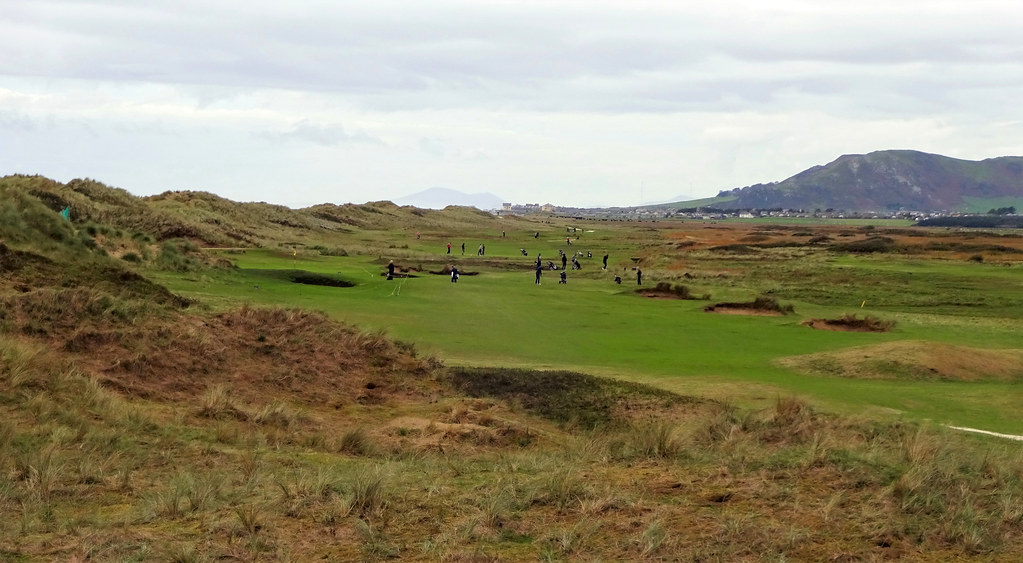
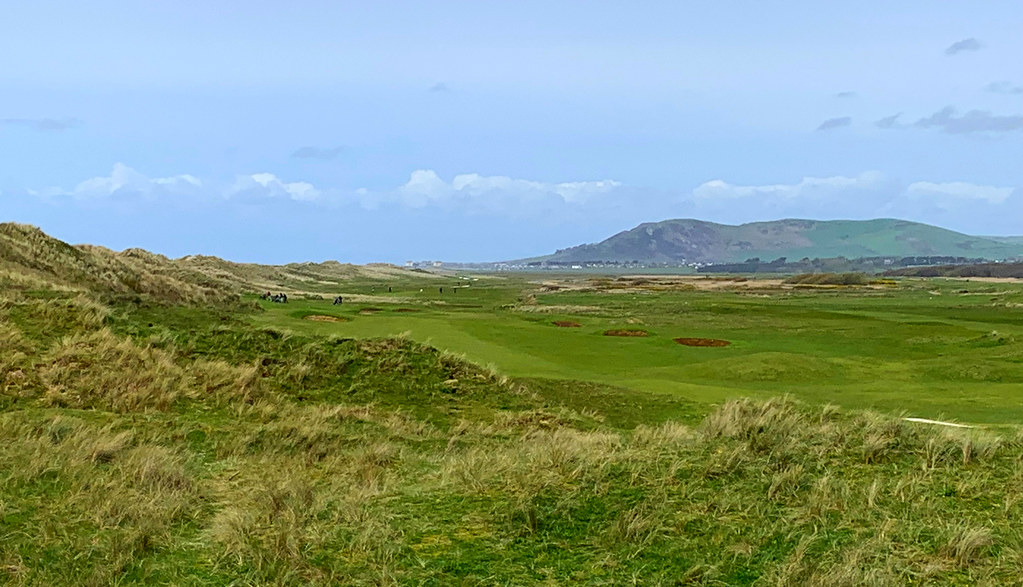
The 200 yardish fifth feels very modern. The use of the huge bunker to the right can deceive the golfer into thinking this hole is shorter than its yardage. There is a sharp rise at the front of the green then it falls to the rear. The use of tees to create different angles is often a neglected aspect of design. On the most recent visit, we played off a forward tee some 30 yards shorter than the main tee, but with a far more difficult angle. There are elements of great charm about Aberdovey as evidenced by the cemetary in the distance. There is a crossing point from here to the aptly called Cemetary Beach.
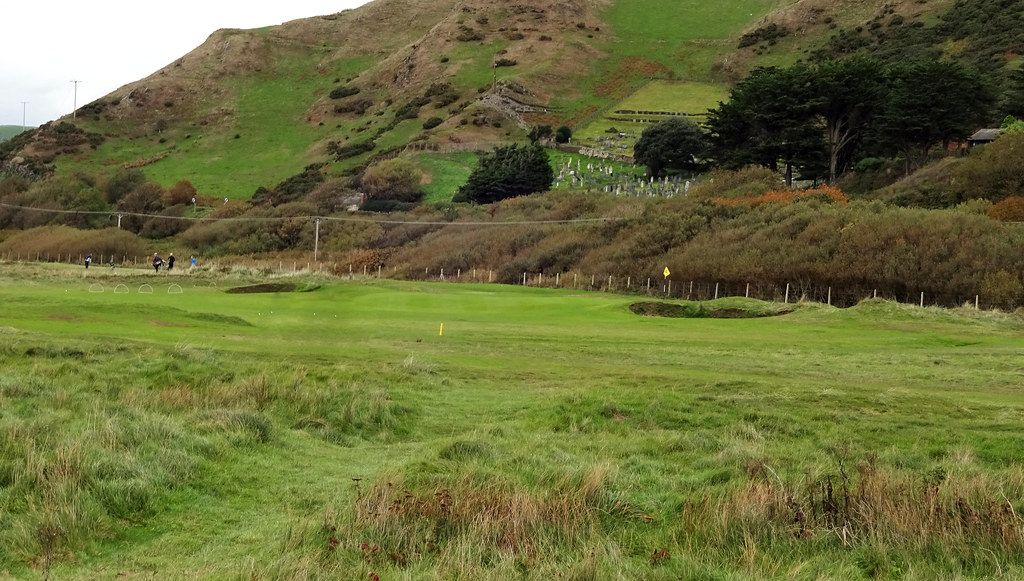
Unfortunately, regardless of the bunkering style, it is not enough to lend any real interest to #s 6 & 7. These holes highlight why bunkering alone is not sufficient to create imaginative holes if there is the abundance of flat ground that Aberdovey possesses. Now past the weakest holes, the remainder of Aberdovey with the possible exception of #14 is a succession of good to very good holes. The highlight of #8 is a nest of bunkers which may give pause to the flat belly trying to bang one home on this short par 4. I don't wish to harp on about the bunkers, but there is a world of difference.
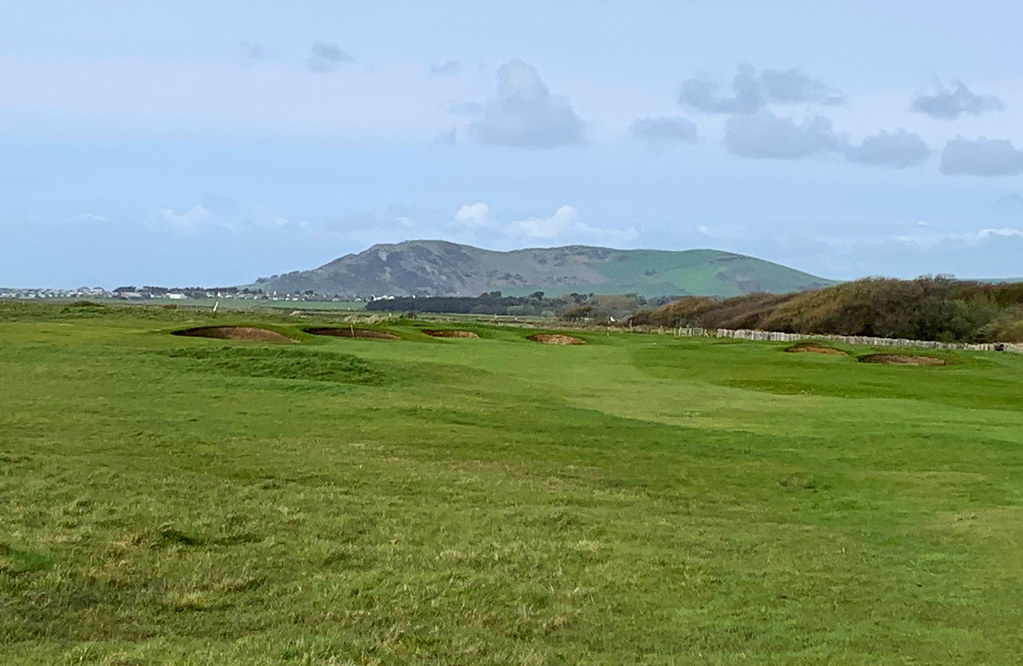
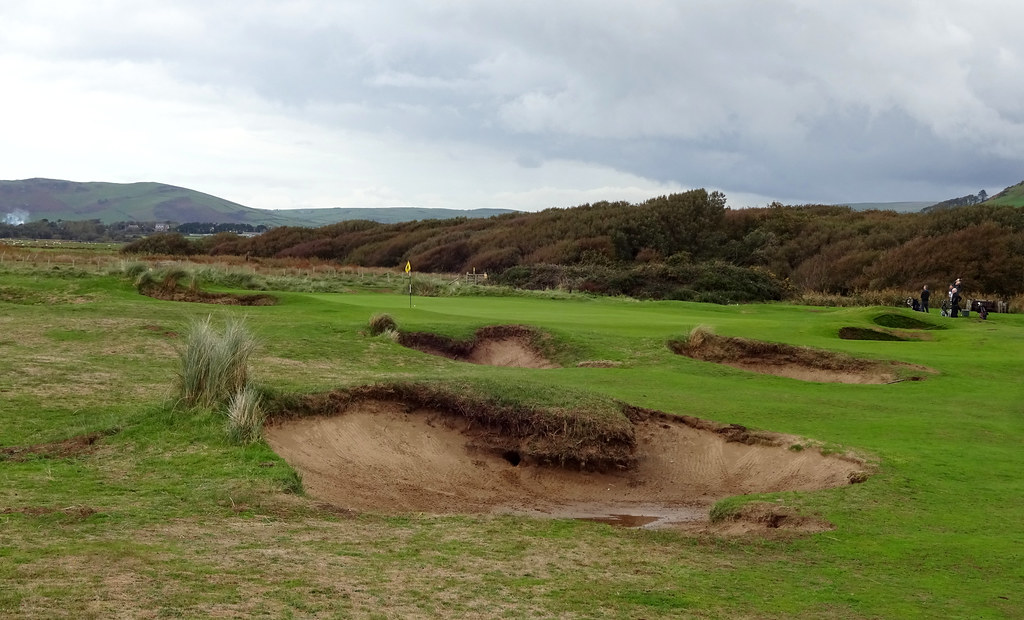
The side finishes with a terrific short hole played over raised bunkers to a green which runs away from play. Once past the bunkers, there is a large gap to the green and loads of space long.

Aberdovey can rightly be called an out n' backer and in perfect proportions because the 10th points the golfer home. However, the shape of the property resembles a hockey stick making it seem like the wind has changed direction when that isn't the case. Gorse can be a nasty hazard if used too often, but if called upon sparingly, the whins are a cracking feature. My memory is that the 10th offered a brave line over the gorse for a drive which is created rather than made, but after a recent play there doesn't look to be any advantage to risking the shot. One architectural element Aberdovey is not short on is bunkering placed well short of greens. They not only serve to catch out recovery play after a poor drive, but the bunkers also protect the accurate gauging of distance when conditions call for run-up shots.
The eleventh turns back on #10 and presents the golfer with a seemingly wide open fairway. Instinctively the golfer should know that challenging the centre-line bunker could reap dividends if successful. The bunker shoulder creates a large crook in the green which can make putting a trial when caught on the wrong half.

The 12th is yet another showcase par 3. Once on the green there are magical views of the expansive beach and Cardigan Bay. The grass has taken hold after the re-build.
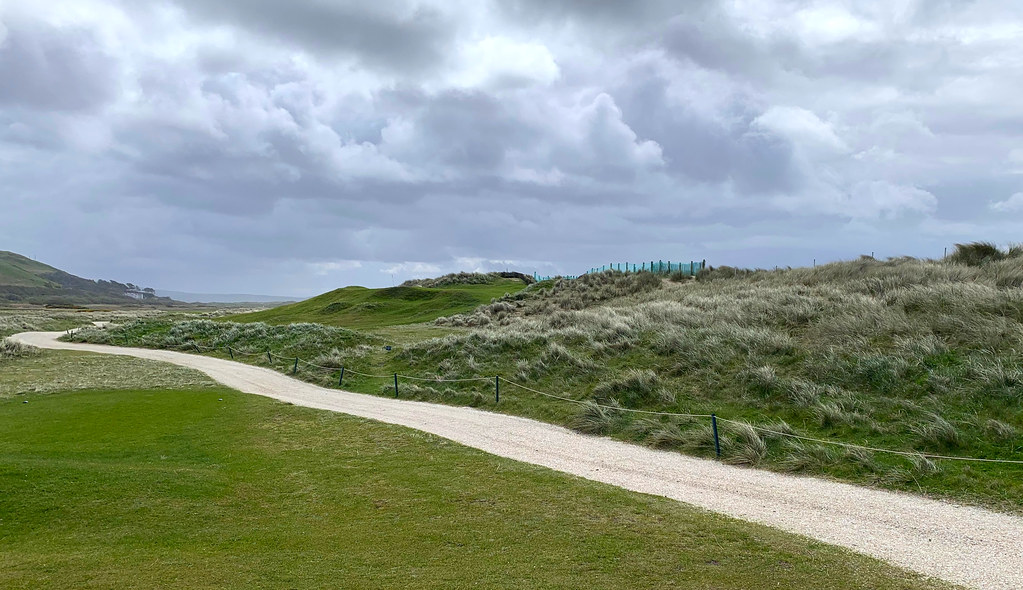
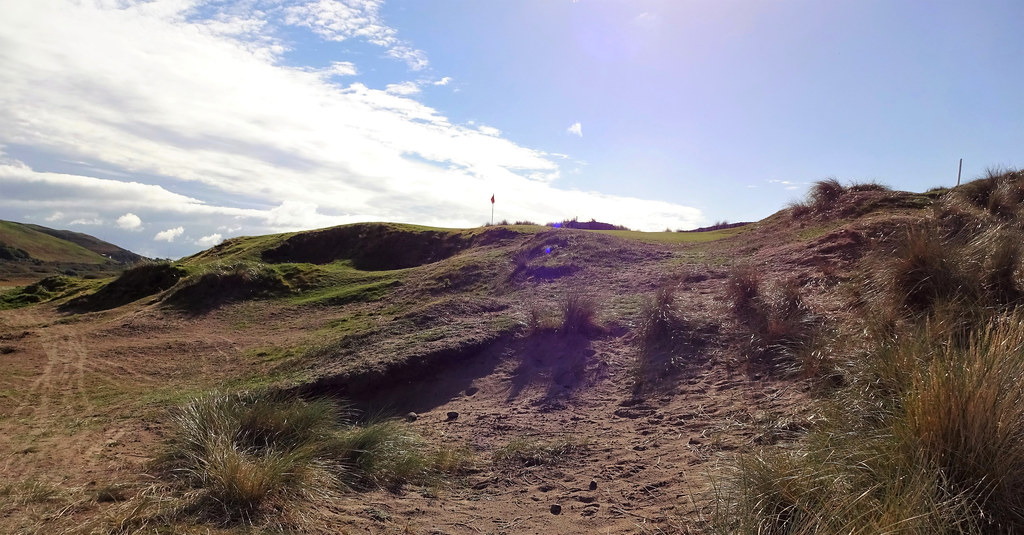
The greens could be pushed out much more toward the sprinkler heads and thus offer some stormer hole locations which are currently unavailable.
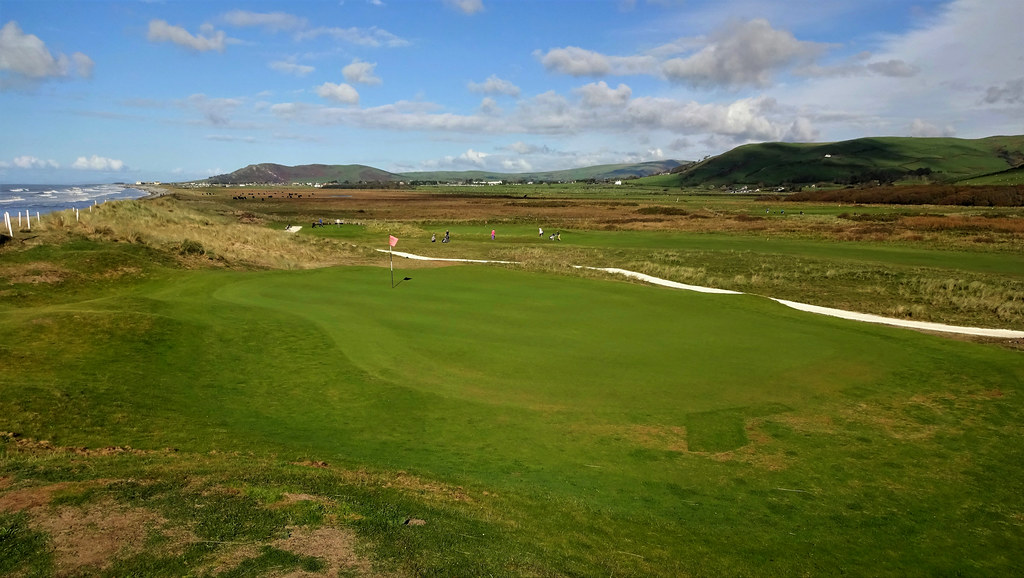
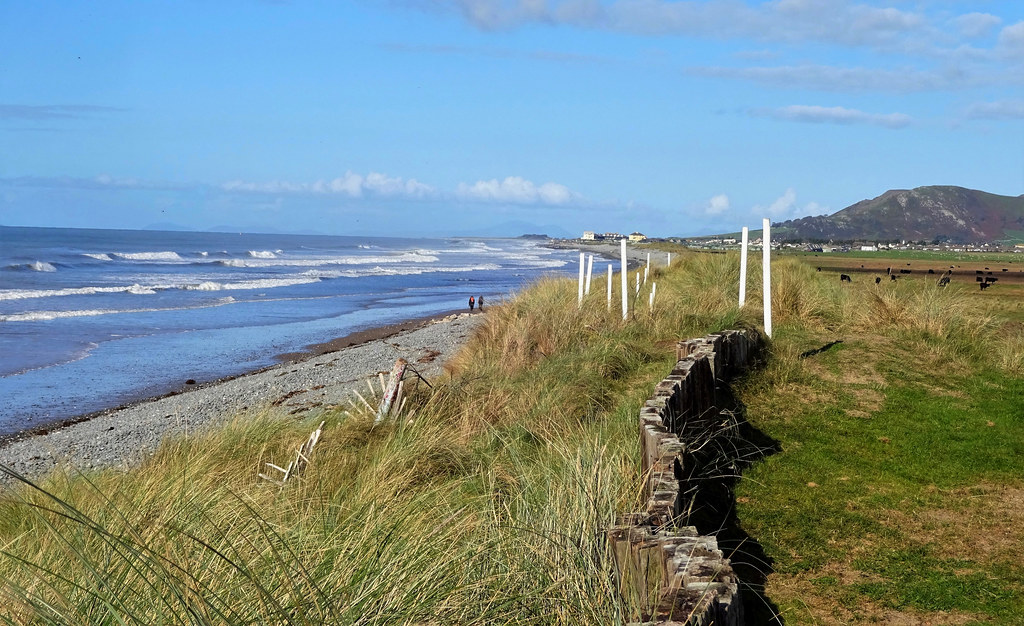
Unlike the lackluster 7th, #13 is an excellent three-shotter. The drive is hemmed in by marshy land to the left and gaping bunker right. If one cannot reach the green in two, it is difficult to know where best to place the second. This is due to a green which doesn't reveal itself until one is quite close. This is the look at a far right hole location after laying up right. The green is sunken below the fairway and wraps around a solitary bunker middle-rightish....which from afar looks like it is behind the green.

The 14th is perhaps too much like a par 4 version of the 13th. I find it surprising that doglegs angling away/toward the dunes or with a green or two tucked under the dunes haven't been designed on the back nine. I can envision that fairway bunker being pushed 15 yards left, splitting the fairway and creating a green which is more receptive from the right, but one is approaching toward water. The familiar left/right bunkering does little to distinguish the approach. The final par 5, number 15, is a corker. The rail line begins to narrow the course and there is also a ditch running near the right bunker which helps to concentrate the mind. A good drive leaves one with the option of going for the green by playing over broken ground. Interestingly, most of the trouble is hidden by a front left mound. Below is a look at the green after laying up. From the 16th tee the reader gets a better feel for how narrow the green is because of flanking bunkers.

We now come to #16. This hole should be mentioned in the same breath as Foxy, Alps and Road Hole. That said, in typical fashion these days clubs feel the need to mess with a good thing. Bunkers have been installed...heavy sigh. Before and after.
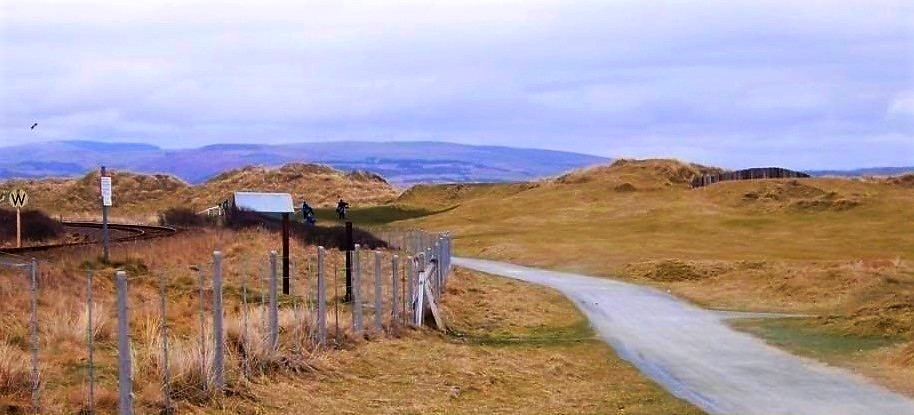

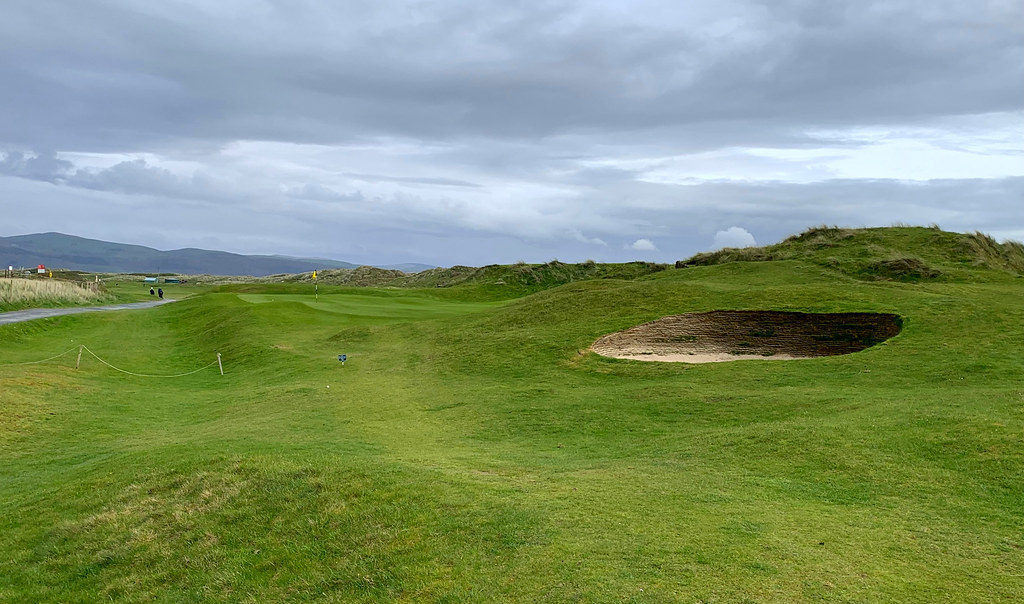

Looking toward the tee.
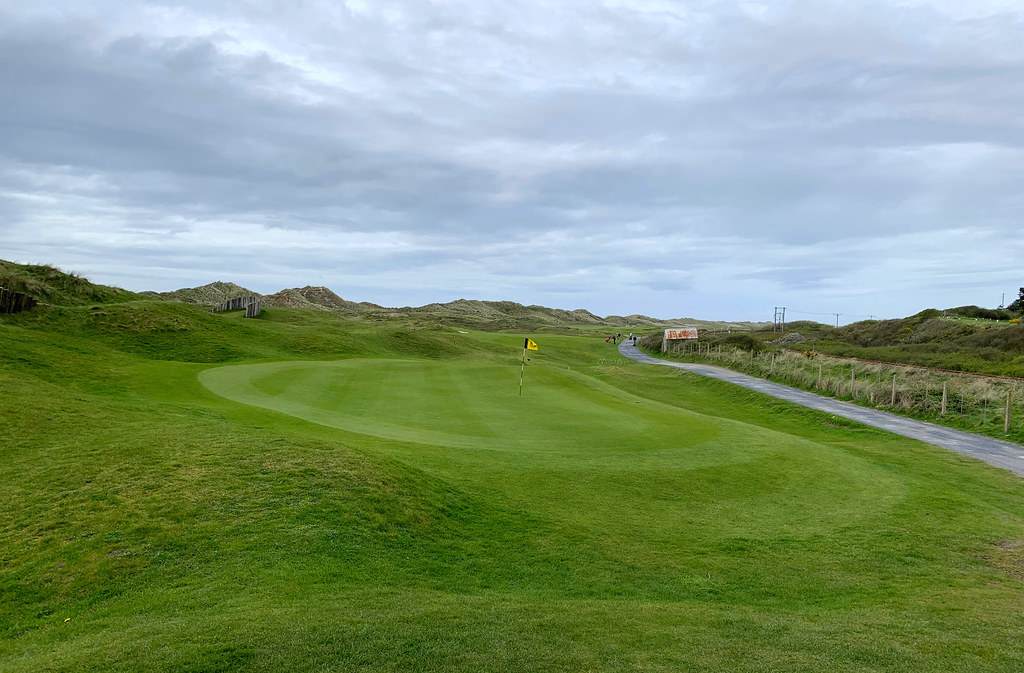
Most holes would suffer in comparison to the 16th, but the final holes are sound. There is plenty of ground movement despite appearances. I notice new bunkers on the left at 17. Before and after.
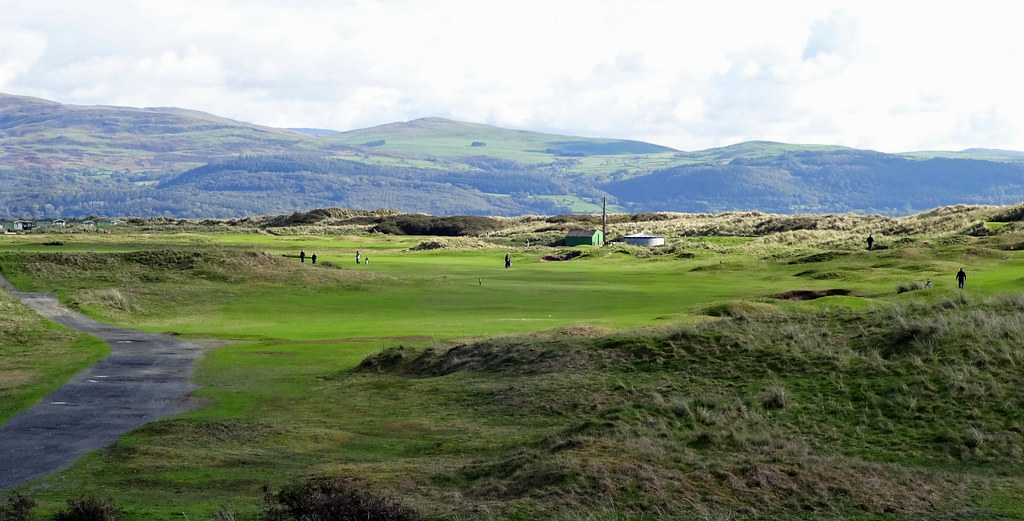

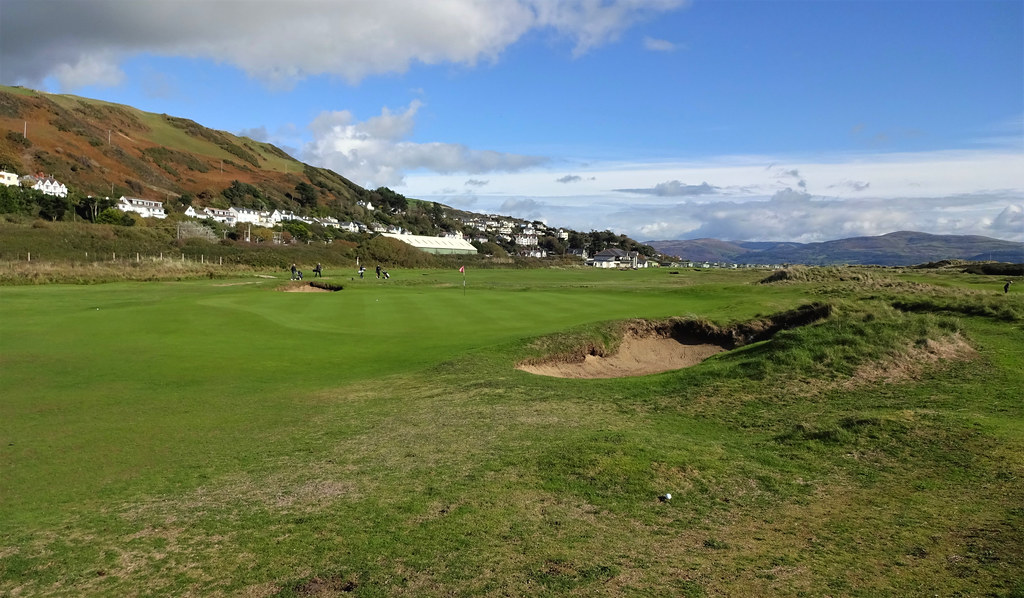
While not a good image, this is how I wish Aberdovey looked today. The approach to the home hole is easier than it looks as the green is a bit of the gathering type.


Aberdovey isn't a top class links, but it does have certain advantages. The design is tightknit which makes for a good walk. There is a combination of splendid terrain and architecture which provides the golfer with enough of a test without taking liberties with the often all too fragile ego. The handful of grand holes, especially the All-Wales 12th &16th, and wonderful Welsh welcome will handsomely repay the effort for "a round at Aberdovey is always a brave and gay adventure, whatever the wind's quarter". 2024
Ciao